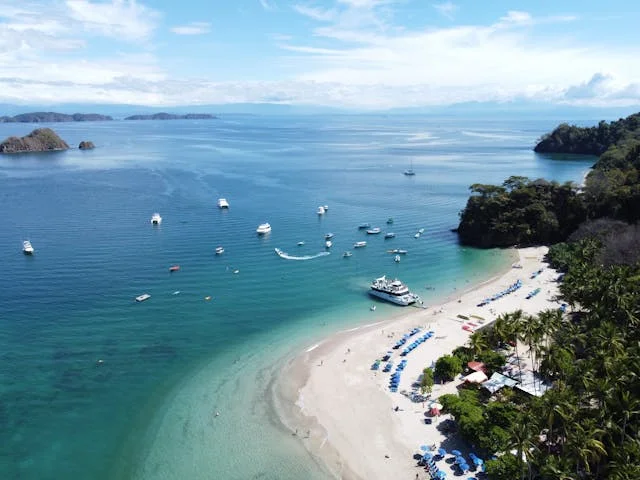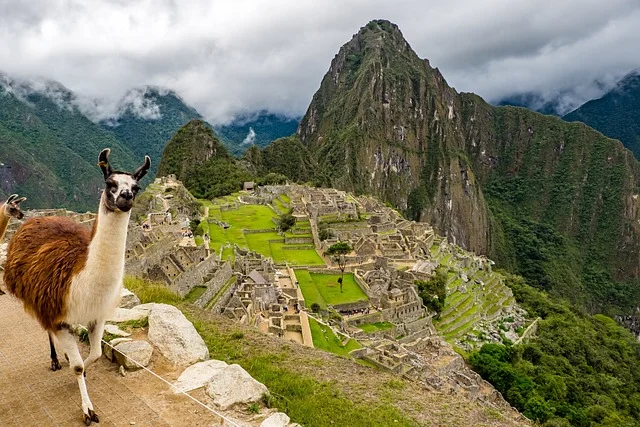The concept of sustainable travel has gone from being just a buzzword to a movement, especially with growing concerns on climate change and preservation. Where travelers seek destinations that, although offering beautiful landscapes and rich cultural experiences, boast about environmental conservation and social responsibility for low-impact tourism. If you are an eco-conscious traveler, take a look at this guide to learn which are the top 10 sustainable travel destinations where to spend your guilt-free vacation in support of green initiatives.
We take a deeper look into what makes these destinations ideal for ecotourists, how they’re contributing to the overall global effort of conservation, and how you too can be part of the change. From the tropical paradises bursting onto the scene to bursting urban centers, this set of sustainable travel destinations truly proves that travel and sustainability go hand-in-hand.
Why Sustainable Travel Matters?
In today’s rapidly changing world, the call for sustainable travel has never been more important. Just as tourism grows, its impact does too, both on the environment and cultures. For that reason, it is of paramount importance that sustainable travel preserve the destinations we love for future generations and is something that’s in the foreground of every traveler’s mind.
1. Preserving Natural Environments
It has, in many cases, resulted in the degradation of the environment through mass tourism. In the case of sustainable traveling, it alleviates this effect by proposing eco-friendly activities. For that, travelers can take small trails at low impact, lodge in eco-lodges, and support conservation projects that help protect fragile ecosystems. Small, mindful choices now ensure that future generations find beauty unspoiled by human intervention; therefore, sustainable travel is a dire need for our planet.
2. Supporting Local Communities
Besides, this form of tourism also allows sustainable travel to benefit the local communities with the need to find locally-owned accommodations and restaurants. Such initiatives allow small businesses to prosper and provide work opportunities for the residents. Community-based tourism projects offer the traveller an immersion opportunity into the local cultures and assist in ensuring that the financial benefits from tourism remain within the community. In such regions, the economic fabric is strengthened through sustainable travel.
3. Cultural Preservation
Heavy tourism often leads to the erosion of cultures in areas that are popularly visited. This concept of sustainable travel therefore fosters an appreciation of genuine local cultures over what is familiar to the traveler. Attending cultural workshops and buying traditional crafts made by natives, travelers help in the sustainability of heritage. In addition, sustainable traveling ensures the cultures remain alive, their traditions passed on to future generations, hence enhancing one’s travel.
4. Reducing Carbon Footprint
Tourism is responsible for approximately 8% of the world’s carbon emissions, and the majority of that comes from flying. In sustainable tourism, it is recommended to travel by trains, buses, or cycling. Eco-lodges predominantly use renewable energy and hence minimize consumption. If tourists can offset their travel by reinvesting in projects enhancing the environment, that would help strike a balance. Sustainable destinations make these greener behaviors more accessible and convenient for travelers.
5. Encouraging Responsible Tourism
It makes individuals responsible for their various destinations that they visit. It enables the understanding of the impacts of tourism on communities and environments over the long term. Responsible tourism supports travelers in making choices that help to protect and preserve this and future generations, tackling issues such as overtourism and wildlife exploitation. Thus, by advocating ethical practice, travelers will be ambassadors for change, promoting awareness and action within the destinations themselves at which sustainable travel takes place.
It is important in terms of beauty, culture, and preservation of natural resources at the destinations. With mindful choice, it reduces negative impacts and engenders the harmonious relationship desired between travelers and the environment and among locals. So, let’s take a look at some sustainable travel destinations that support these key objectives crucial for a better future.
Tips for Sustainable Travel
In other words, travel can protect the planet and allow us to make more new adventures. With a few simple tips to follow, travelers have the potential to make a lesser impact on the environment and positive contributions to where they go. Some effective ways to make your travel more sustainable will be shared in this regard.
1. Choose Eco-Friendly Accommodations
Stay in eco-lodges or sustainable hotels that possess environmental certifications. Look out for facilities that conserve energy, use renewable resources, and have programs to help indigenous communities. Eco-friendly accommodation will make sure your journey meets your criteria of sustainability, hence enabling you to reduce carbon footprint as much as possible.
2. Reduce Plastic Use
Plastic waste is currently one of the most serious environmental issues. Please bring a reusable water bottle, shopping bag, and utensils with you to minimize using single-use plastics during your trip. If possible, select products with minimal packaging and also avoid the use of plastic straws. Minimizing plastic consumption can help in the protection of wildlife and keep destinations clean.
3. Support Local Businesses
Eat at local restaurants; do your shopping at the market; go on community-based tours. This will help your dollar go directly into the community and not into large corporations. Indeed, this will empower the local economy and make your travel experience yet more worthwhile with the real cultural interaction.
4. Opt for Public Transportation
Wherever possible, utilize public bus, train, or tram transportation instead of car rentals or taxi services. It reduces carbon emissions, plus you get to experience the destination so much more authentically. When possible, even walking or biking will enable sightseeing with a smaller environmental impact.
5. Engage in Responsible Wildlife Tourism
Responsible tours that treat the animals well will give experiences on wildlife in travel. Steer clear of all forms of attractions with regard to exploitation, such as elephant rides or performances. In contrast, select sanctuaries that are more conservation- and education-oriented in order to ensure your experience contributes toward following ethical practices with regard to wildlife tourism.
6. Practice Leave No Trace Principles
Practice Leave No Trace to minimize your impact on the natural environment. Respect wildlife, stay on designated trails, and leave natural and cultural sites in the same condition as you found them. By doing so, you assure that natural scenes continue to remain beautiful for future visitors.
7. Offset Your Carbon Emissions
Do consider offsetting from travel carbon emissions by supporting a project that reduces greenhouse gases, such as reforestation or renewable energy projects. Many organizations offer carbon offset programs where you can calculate your travel emissions and invest in projects that combat climate change-promoting a sustainable travel mindset.
8. Be Mindful of Water Usage
In many destinations, water scarcity is a constant threat. Be more aware of water usage by taking shorter showers, reusing towels, and washing only full loads of laundry. Whenever you can, conserve water to protect the local resources, as many places face drought or water shortages.
9. Educate Yourself on Local Cultures
Cultural understanding and respect are major concerns for traveling responsibly. You should research customs and traditions before visiting a place, which also involves social norms within that destination. Being culturally sensitive develops a more enriching travel experience and builds good relations with the host communities.
10. Leave a Positive Impact
Consider volunteering while traveling. Participate in local conservation projects or community development work. Ensure to have positive impacts so that your visit will be of great benefit to the community and to the environment, while reinforcing the principles of sustainable travel.
The sustainable travel tips on this page will help you make a big difference in the world during your travels. Every conscious choice protects the environment, helps along the way of local communities, and maintains the typical culture of the destinations being explored. Welcome to the world of sustainable travel with us, for a much brighter and greener future of our globe.
Top 10 Sustainable Travel Destinations for Eco-Friendly Travelers
1. Costa Rica
Among the ecologically feasible destinations, Costa Rica could well be the first thing that comes into one’s mind. This Central American country has granted itself a gold standard due to its incomparable biodiversity and policy of ecological awareness with regard to eco-friendly tourism. Indeed, Costa Rica stands firmly for sustainability: over 25% of this country consists of protected areas. The latter, in turn, would involve national parks, wildlife reserves, and biological corridors, hence being among the most biologically intense places in the earth.
Nature adherence ranges from hiking in the Monteverde Cloud Forest to spotting wildlife in Corcovado National Park. Many of the existing eco-lodges and hotels scattered throughout Costa Rica equally invest much in renewable energy, having stringent recycling and waste policies. Whizzing along a rainforest canopy or reclining on a pristine beach, Costa Rica provides an immersive plunge into sustainability.
2. Iceland
If the climate is to be colder and at the same time make sure it’s going to be an ecologically right trip, then Iceland surely features on the list of sustainable trips. Known for otherworldly landscapes, Iceland has done much in the line of lightening its carbon footprint: this country runs almost all its electricity via renewable resources, above all geothermal and hydroelectricity.
In the name of protecting the environment, the Icelandic government has taken strident rules to preserve the fragile ecosystems: glaciers, hot springs, and volcanic lands. The visitors can safely feel that sightseeing tours through some of the dramatic scenery in Iceland-from the Golden Circle to the geothermal waters of the Blue Lagoon-is ecotourism dollars well spent in the name of alternative energy. No visit would be complete without stopping at Thingvelli National Park, a UNESCO World Heritage Site, where there’s one particular thing rather out of the ordinary: two tectonic plates meet.
3. New Zealand
New Zealand is a dream destination for many outdoors lover and is fast becoming one of the world leaders concerning sustainable travel. A pledge to eco-friendly care for the environment is reflected in nature tourism’s defined aim-to minimize impacts while improving the natural environment.
Its landscape ranges from some of the most beautiful fjords, such as Milford Sound, down to geothermal miracles such as Rotorua. Because of this fact, it has made the government and local businesses very open toward sustainable tourism: things like carbon-neutral accommodation, recycling, waste reduction, and the conservation of wildlife. Join an eco-cruise, go whale watching in Kaikoura, or hike in one of New Zealand’s many national parks, knowing your travelling dollar is contributing to the protection of such amazing natural habits.
4. Bhutan
Nestled smack in the middle of the Himalayas between India and China, Bhutan tends to be a model state that flaunts its commitment toward being green. In fact, it is the only country in the world which is not just carbon-neutral but carbon-negative; it absorbs more carbon dioxide than it lets out.
The high commitment to environmental conservation deeply enshrined in the Buddhist philosophy helps Bhutan be in step with the natural environment. This initiative limits the number of tourists who may enter the country every year and charges every tourist a certain fee per day, once more helping finance these conservation projects for maintaining Bhutan’s pristine environment. Travelers can explore unspoiled forests, hike to ancient monasteries like Tiger’s Nest, and visit local communities with the assurance that they are helping to support sustainable development through tourism in Bhutan.
5. Norway
While being all but synonymous with Norway, what really positions Norway as a world-premium country for sustainable travel is the resolve to preserve these things. Norway protects those pristine waterways and mountainous landscapes through rigid environmental legislation. It’s another country to lead the lineup in renewable energy production, where much of its energy has been harnessed from hydropower.
Norwegian tourism authorities have been busy lately promoting everything from electric ferries, which cruise along fjords, to carbon-neutral hotels. The ecotourist will find every way imaginable to see the country in an environmentally friendly style, via hiking, kayaking, and wildlife safaris. These include the UNESCO-listed Geirangerfjord and Nærøyfjord, which are absolute must-sees, with their mix of overwhelming beauty and responsible tourism.
6. Slovenia
While it may be lesser known, Slovenia is surely up and coming as a frontrunner in green tourism. Even its capital, Ljubljana, has been designated European Green Capital in 2016 due to policies in place to protect sustainability through green space, reduction of waste, and renewable energy.
In addition to the capital, Slovenia offers some fabulous natural beauty, from the Julian Alps down to Lake Bled, a field day for environmentally friendly tourism: many eco-certified accommodation facilities, cycling routes, and hiking routes drawn up with the aim of causing minimum damage to the environment. Slovenia protects especially rich biodiversity and is, therefore, an excellent choice both for lovers of nature and environmentally friendly tourism.
7. Kenya
From outstretched expanses of savannas to incredible wildlife, Kenya forms the backbone of truly iconic sustainable travel in Africa. Happily, Kenya’s tourism industry is taking serious steps toward greener pastures-or at least it is on the wildlife conservation front. These days, ecotourism safaris of Kenya’s national parks-mighty Maasai Mara and Amboseli-form one of the best ways to see Kenya’s wild beauty while giving something back in return.
Most lodges and camps throughout Kenya have made efforts in the form of solar power, water recycling, and various community-based tourism projects supporting the local Maasai and Samburu communities. This enables the many visitors taking safaris with responsible tour operators to enjoy Kenya’s unspoiled beauty and contribute to the conservation of the rich biodiversity.
8. Finland
Probably, Finland is not among those countries which appear to be first on your list to go to while thinking about sustainable travel, but it took a quite decent place in the ranks of ecological tourism. Finland is famous for its very clean air, great forests, and pristine lakes; here, the government has identified environmental protection as an important aspect concerning the tourism industry.
Arguably, one of the best ways to see Finland’s sustainability go into action is when the nation’s ever-popular “forest bathing”-a kind of sensory immersion into nature for the stress-reducing and wellness-promoting advantages it confers-takes place. Options to keep things green range from log cabins to glass igloos offering Northern Lights views with minimum footprint. From hiking in any of the 40 national parks to sitting in a sauna by a lake, this country feels like a place where an eco-tourist would feel at home.
9. Peru
Perhaps better known for the iconic Machu Picchu, Peru is fast becoming one of the most talked-about countries in South America because of its sustainable tourism. This has entailed the active limitation of the amount of tourists to Machu Picchu by the government of Peru, with a view to preventing wear and tear on this UNESCO World Heritage Site, and tour operators have begun to construct alternative eco-methods of seeing the area.
CHECK OUT – 3 Days in Madrid: Ultimate Travel Guide for an Amazing Trip
Besides Machu Picchu, Peru has a great variety of ecological systems, from the Amazon Rainforest up to the Andean highland, which naturally means high levels of biodiversity. Ecologically sensitive tourists may learn about environmentally friendly tourism opportunities, such as eco-lodges in the Amazon or community-based tourism in the Sacred Valley. You can travel more responsibly and help take care of Peru’s natural and cultural heritage for future generations.
10. Portugal
It has been able to stay in the list of favorites really because of its sustainable travel attractions. The capital of Portugal, Lisbon, is fast taking transport to greener lanes with electric buses and bikes, rejuvenating the green inside the concrete boundaries of the city. In Algarve, eco-tourism has gone into full swing along the coastline, with many making sure that the beauty of the beaches and their marine life remain the same.
From solar-powered hotels to other eco-accommodations, it gets ever easier to green your footprint while traveling in Portugal. Ranging from taking in Lisbon’s historic streets, surfing the Atlantic, to hiking along the notoriously beautiful Rota Vicentina, Portugal has a number of opportunities for sustainable travel – embracing both the urban and outdoor enthusiast.
Embrace the Future of Travel
As the world increasingly wakes up to the need for environmental sustainability, so does the travel industry move to meet these growing demands. From the biodiverse rainforests of Costa Rica to the pristine fjords of Norway, these top sustainable travel destinations provide great experiences without compromising the future of the planet. It is important that responsible travel options be chosen not only to lessen one’s impact on the environment but also to preserve natural and cultural treasures for times to come.
Have you been to any of these sustainable travel destinations, or do you have any other eco-friendly spots which you would like to recommend? We’d love to hear from you! Leave a comment below and share your experiences in sustainable travel with our community.














